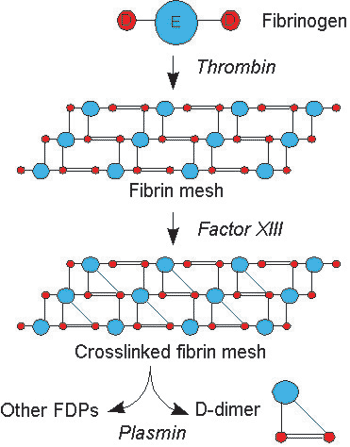|
|
| HEALTHY HAPPENINGS - March 2023 |
You Don’t Have to Become a Statistic
by Ray Andrew, MD
|
Losing a loved one is hard. The grief can be devastating, debilitating, and long-lasting. It can be especially difficult when the loss seems to have no meaning. If a loved one dies as a result of reckless behavior, or as a result of a lifetime of unhealthy choices, our sorrow is complicated by the knowledge that some personal responsibility was involved, and that it was just a matter of time before such decisions caught up with him. When the loss is both unprovoked and unexpected, however, the grief can be all the more acute and severe. If you have ever carried a baby to term, for example, and then lost her before or during birth, your inability to understand why this happened, and your powerlessness to have prevented this outcome, make your grief all the more painful.
Historically, the rate of stillbirth in Grand County was one precious baby every other year. Suddenly, in January 2021, something changed. In the first six months of the year, mortuary statistics in the county reveal that the lives of five highly-anticipated newborns ended before they began. In other words, overnight the rate of loss had increased to 20 times the historical average.
But this is not all. Mysteriously, since the beginning of 2021, a full year after COVID started, previously-healthy people all over the world started dropping dead for no identifiable reason. This has even caught the attention of medical authorities, who have dubbed it “Sudden Adult Death Syndrome”. Looking in all the wrong places, they have thrown up their hands and given the phenomenon a meaningless name that provides no guidance for prevention or treatment. But it’s not just adults. Young, healthy people are getting hit as well. Every day I read a report of another athlete or student being mourned after passing away on the field, walking to class, or sleeping in bed.
Thankfully, we have public health agencies on all levels working day and night to solve this crisis. If a 747 goes down, killing everyone on board, there is an all-hands-on-deck investigation around the clock until the cause is identified and resolved. Imagine the response that is currently underway since dozens if not hundreds of 747s-worth of people have died unexpectedly in the last twenty-five months. You can bet the resources committed to this crisis are enormous. But the studies required can take a long time and have to go through endless bureaucracy before appropriate changes are made. Do you have that much time to wait? Can you afford to be the next statistic? Could you or someone you love have a ticking time bomb inside of you?
Oddly enough, we are learning that one clue might be found in the embalming process. In the preparation of a body for viewing, morticians inject embalming fluid throughout the body through a single blood vessel. Since the beginning of 2021, however, morticians are reporting having to inject into two or even three blood vessels to get the job done in many cases due to the presence of large clots blocking the vessels. Dissecting those vessels, they are finding fibrous clots up to several inches long.
Becoming aware of this new phenomenon, we at Prestige Wellness Institute have been testing many of our patients for an abnormal amount of D-dimer. This is a breakdown product of cross-linked fibrin. In other words, when your body is trying to break down blood clots (cross-linked fibrin), we find D-dimer in your bloodstream. The higher the D-dimer, the more clotting you have. You only want clotting when you get injured, have surgery, or are spontaneously bleeding. Clotting in any other circumstance is inappropriate and can be fatal.
A normal level of D-dimer is less than 0.20. Studies have shown that the higher your level is above 0.22, the sooner you will die, and not just from blood clots. But if you were to go to the emergency department complaining of leg pain, chest pain, or difficulty breathing, and your D-dimer was 0.5 or higher, you would be sent for a CT scan of your chest to look for blood clots in your lungs (pulmonary emboli), which can end your life suddenly. So imagine our alarm when we started seeing D-dimers coming back at 0.65, 0.90, 1.12, and 1.66 in people of all ages who were going about their business feeling fine. In other words, right now their counter-regulatory mechanisms are working overtime to successfully break down inappropriate clots before they can completely block blood flow to some vital organ. But how long will this last? Do you want to know if you have a ticking time bomb inside of you so you can do something about it?
I love all my friends in the mortuary business. I just don’t like to send them any business. If you agree with me and don’t want to be the next healthy person joining the throng of suddenly and unexpectedly deceased people, get your D-dimer tested as soon as possible. While you’re at it, ask your doctor to test your hsCRP and IL-6, which are additional markers indicating high risk of premature death. If any of these indicators is abnormal, ask your doctor to start appropriate clot-busting and anti-inflammatory treatment immediately. If your indicators aren’t back to normal or at least dropping within 30 days, you need to take more aggressive action and/or look for other serious causes of these abnormalities. This is not one of those things like blood pressure, blood sugar, or cholesterol, where you have years before plaque buildup provokes a heart attack or stroke. These clots are developing overnight, without notice.
You don’t have to become a statistic. But you do need to act quickly. Life is precious. Take action today. If your doctor is unable to check your D-dimer, hsCRP, and IL-6 right away, or lacks training in how to safely get them back to normal without increasing your risk of dangerous bleeding, call us at (435) 259-4466 to get this taken care of.
|
National Nutrition Month: Fuel for the Future
by anel Arbon, RDN
|
“March is National Nutrition month! The Academy of Nutrition and Dietetics invites everyone to learn about making informed food choices and developing healthy eating and physical activity habits. 
How should you build a healthy meal and fuel your body? We read a million things online about what is healthy and what is not, and all the information seems contradictory. However, building a healthy meal really is simple! The following are some easy steps from Janel Arbon, a Registered Dietitian Nutritionist at Moab Regional Hospital, to start eating healthy.
First off is portion control. Controlling your portions and the amount of food you eat is essential to developing healthy eating habits. Start with a nine or 10-inch plate to help you watch your serving sizes. By managing your calorie intake, you can prevent over-eating and gaining weight.
The second is vegetables! Fill half your plate with non-starchy vegetables; these could be raw or cooked! You might try steamed broccoli and carrots or a spinach salad with bell peppers, cucumbers, and tomatoes. Instead of using heavy store-bought salad dressings, add a squeeze of lemon or lime or add vinegar and olive oil to your salads. Non-starchy vegetables are high in vitamins and minerals, low in calories (to help you maintain weight), and high in fiber, so they are filling and helpful to your digestive system! 
Third, find a healthy protein to make up ¼ of the plate. Choose a lean source of protein, which can be plant-based (tofu) or animal based. Lean animal proteins include skinless chicken or turkey (breast or white meat preferred), fish, pork loin, 90% lean beef, or eggs. The way you prepare your protein makes a difference. Baking or grilling are preferred cooking methods over deep frying or frying. Proteins are made of building blocks called amino acids; these amino acids help build and repair muscles and bones and help produce hormones and enzymes, all while providing energy for you!
Fourth, add a carbohydrate or starchy food for the other ¼ part of your plate. When choosing carbohydrates, it is best to choose a whole grain.
Examples are brown rice, whole grain pasta, whole wheat roll, sweet potato, etc. Whole grains provide more essential nutrients that your body needs. Carbohydrates also provide the body with glucose, which converts to energy to help support your physical activity. Carbohydrates are typically your primary energy source.
Fifth, add some dairy. Low-fat dairy sources include an eight-ounce glass of skim or 1% milk, soy milk, and fat-free or low-fat yogurt. These choices provide you with calcium, which promotes healthy bones and teeth! Calcium also plays a role in blood clotting, muscle contractions, heart rhythms, and nerve functions.

Sixth, add some fresh fruit for dessert. Fruit provides essential vitamins to your diet and is full of water which helps you stay hydrated. Fruit also has antioxidants, which help slow the aging process and reduce your risk for cancer. Fruit is also high in fiber, preventing constipation and lowering your risk for heart disease.
Compliment your meal with a beverage by choosing water or a non-caloric drink. Choosing something non-caloric will keep you from getting unnecessary empty calories.
Lastly, avoid extra fat. Monounsaturated fats (like olive oil, avocados, and nuts) are healthier fat choices. They should be used over other high-fat foods. High-fat foods increase cholesterol levels and increase your risk for heart-related illnesses. Don›t use heavy gravies or sauces that add to your calorie and fat intake. Eating steamed broccoli is great, but topping it with a lot of cheese sauce makes it much less healthy. Instead, try sprinkling the broccoli with a bit of parmesan cheese. It is still delicious but doesn›t have excessive calories.
These steps will aid in creating a healthy eating routine. Moab Regional Hospital›s Registered Dietitian Nutritionist, Janel Arbon, can help you develop healthy habits that are sustainable and unique to your health needs. To make an appointment with Janel, ask your primary care provider for a referral.”
|
|
|
|
|
|
|
|
© 2002-2024 Moab Happenings. All rights
reserved.
Reproduction of information contained in this site is
expressly prohibited.
|
|